
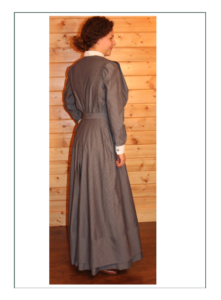
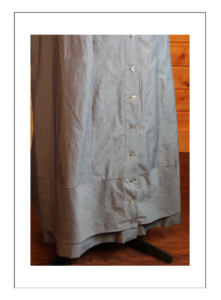
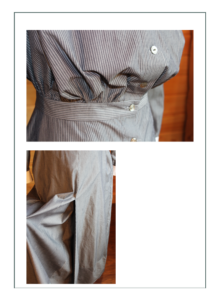
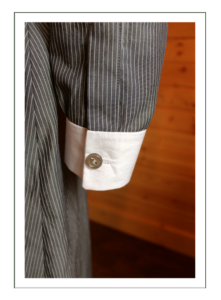
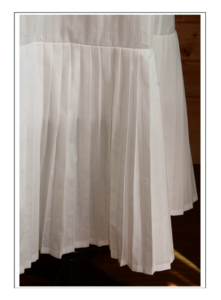
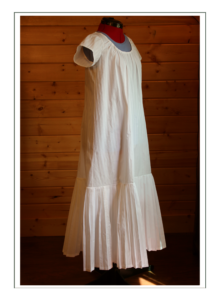
This project is based on the 1911 Ellie Nurse Ensemble, and uses the research there. (Shown above) It is basically replicating in fabrics, colors, and fit for Jennifer.

Character Summary
There is little actual information, and virtually no patterns or references for nurse ensembles of the early 20th century. The extensive historical research on nursing in general and for nurses specific are the basis for Ellie’s ensemble design. To summarize what we have learned:
Jennifer’s character is a U.S. born citizen, educated through early schools and later nursing school in the midwestern or eastern states; most likely the Philadelphia, Pennsylvania or Chicago, Illinois areas where medical institutions had strong nursing programs by 1910.
She would most likely be a single woman and living on her own. Of limited means; perhaps a stipend from home plus her nursing wages, she would most likely live within walking distance of her place of work. This would mean a city apartment.
Her loyalty would be to the institution in which she trained, and most likely she would be hired by the same organization. She would work her way up the ranks, so that by the entrance of the US in World War I in about 1915, she would be a senior or administrative nurse, having been educated at the highest level possible at the time, and coming from a family of some means.
She would have volunteered to go on a steamship to France with the American Nurses (because her PA institution would have ties to it) rather than the Red Cross, as a professionally and specifically trained “war nurse”. There she might have met the Military Medical Corps nurses of Queen Alexandra.
Key photos to give us clues to the personality, place, and function of Ellie’s character specifically are below:
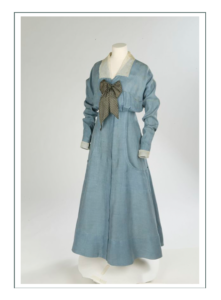
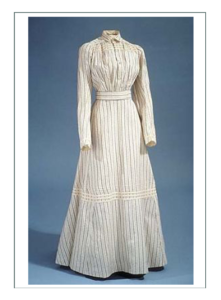
High fashion influences – from this we draw the basic silhouette including shape of sleeve, fullness, skirt, blousewaist, fabric type and drape, skirt length, color, and bodice insert ideas as well as cuffs and collar ideas. Ideas for cut, fabric, skirt length for function are drawn from working ensembles of the day:
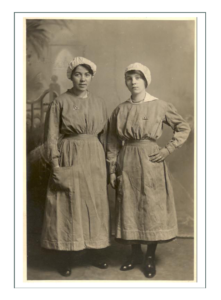
The lines, waist, trim patterns, sleeves (length, fullness, cuff), neckline, skirt length and gores of high fashion directly relate to nurse uniforms of the time. Note in particular the skirt shape, rump, blousewaist, and standing collar taken from high and low fashion of the day. From this we decide to make for the dress (entirety called a “blousewaist” still – standing collar, 1909 blousewaist, gored and pleated rump, ankle to floor length)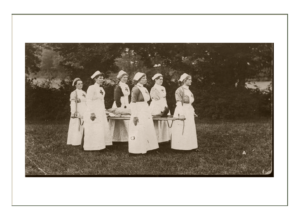
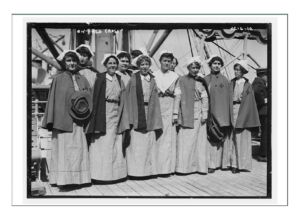
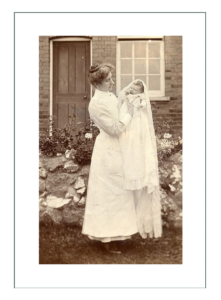
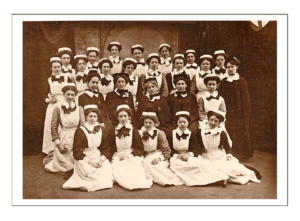
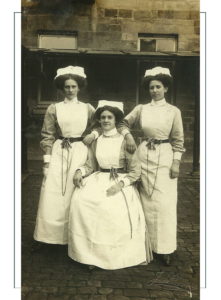
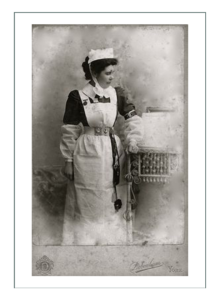
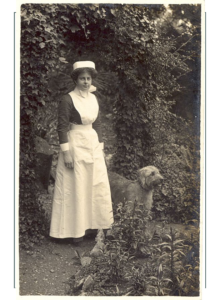
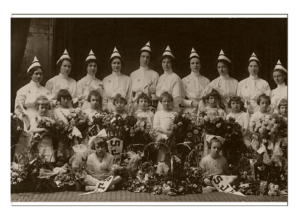
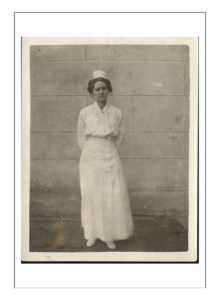
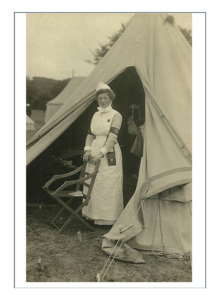
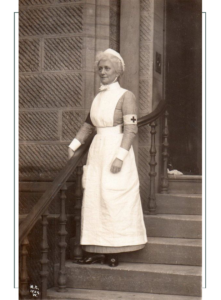
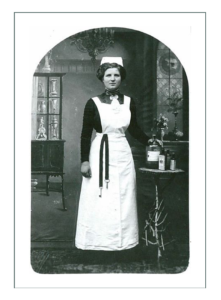
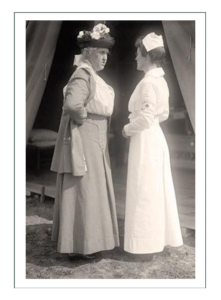
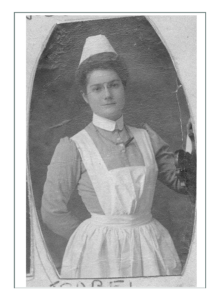
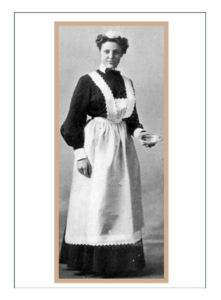
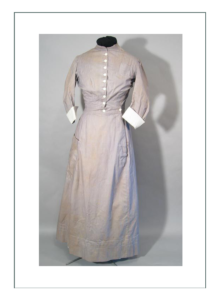
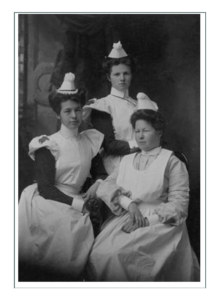
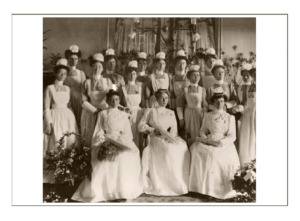
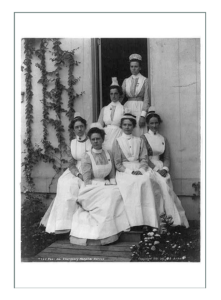
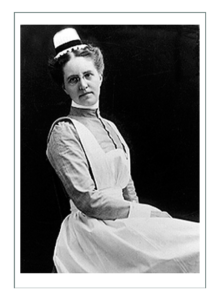
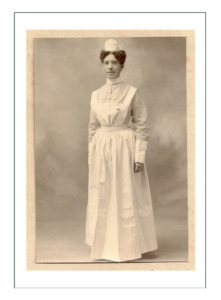
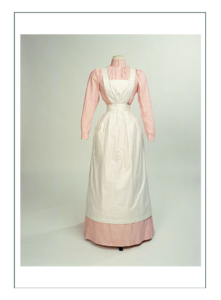
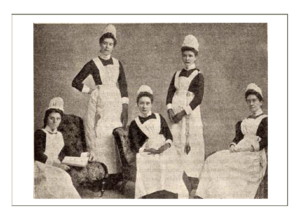
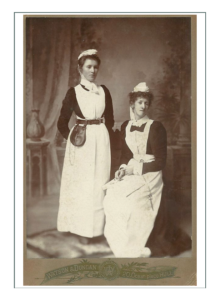
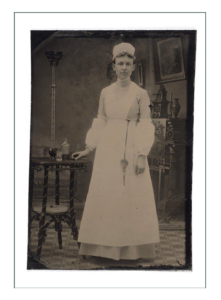
 Drawing Conclusions from Little Evidence; Photos & Extant
Drawing Conclusions from Little Evidence; Photos & Extant
Design for Ellie’s ensemble comes from the anecdotal and historical evidence of real nurses of the time, and predominiantly from photos of nurses of similar institutions at home and abroad. Since there are virtually no patterns or guides for uniforming for nurses or for domestic servants or even nuns on which the history of nursing costumes is based, we must use “high fashion” patterns of the day, and modify them to what a working woman, and specifically a nurse would wear.
Key photos and extant examples to draw from are below:
Since we must base the uniform on high fashion patterns, instructions, and notes from the time, there are three key factors that will distinguish nurses from domestic servants from high or Edwardian fashion of 1910:
- Function first – all must be comfortable, washable, and the woman must be able to dress herself
- Symbolic or representative color and pattern for her station and location
- Institutional guidelines & requirements
Again, we refer to extant garments and photos for ideas on fabric. The following key examples are consistent with the assumed character, place, and background:
 Final Selections Based on Research
Final Selections Based on Research
Apron
The apron is based on examples of typical American hospital aprons; a simple, stiff premium cotton with a “strapped” bib, full over the shoulder wide straps so they don’t slip, and just enough gathers to protect the skirt most of the way around. What is different that that of housewives and past aprons, is that it is the same length as the skirt to protect it all the way to a dirty floor or the ground.
Cap
As there is little information and no patterns or instructions for caps, Ellie’s is based solely on photos, and starts with the design of a white cotton mobcap of 1790. We made it much smaller with just enough covering to hold the hair off the face, and added the “black stripe” which indicates her senior administrative status.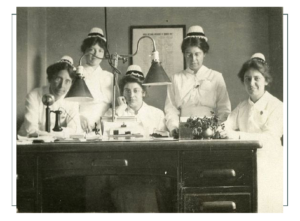
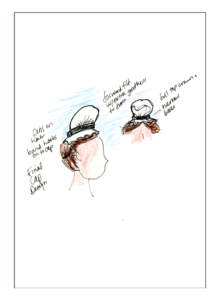
Belt & Chatelaine
The belt will be designed for change in waist size, and gives enough strength to hold an AUTHENTIC hand cast metal belt hook with it’s heart cut out which is very heavy.
As a supervisory nurse Jennifer will carry tools for advanced wound dressing including scissors and forceps as well as an AUTHENTIC 1910 syringe plunger. She would have blood pressure and thermometers.
Undergarments
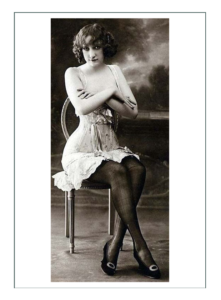
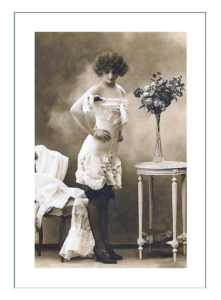
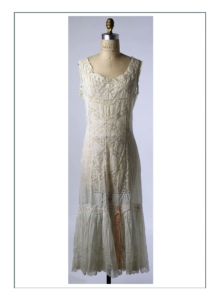
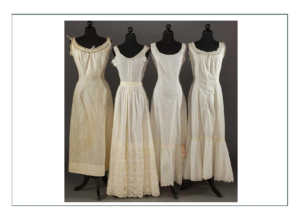
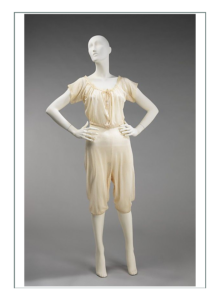
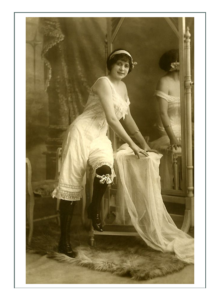
Shoes, Stockings, Jewelry
Her accessories are minimal and specific to WORKing: durable and comfortable low heeled (yet fashionable with the tapered heel and narrowed toe) brown leather pumps worn over cotton stockings (although nylons were available), and a watch fob locket pinned to the apron. It hangs upside down, and Ellies is a reproduction which includes the nurse’s oath engraved on the back.

The final design was simple and based on the real photos. There were no patterns, so we built from photos, especially the cap and apron. The project will have:
1) slip as under most layer, of plain, breathable cotton, with a full bottom for easy movement, and the long new princess line;
2) dress in dark shade in cotton, front closure for easy on/off without help;
3) very plain Monobosum corset as from a catalog; the cheapest look, but well fitted;
4) starched apron with the semi “V” front and cross in back with a wide waist to accomodate a belt;
5) custom elastic belt with chatelaine and hook;
6) appropriate accessories – nurse’s watch, chatelaine, etct;
7) large institute cap, showing senior status of a “Lady Nurse”.
Because there was a time constraint on this project, we skipped sketches and the gathering of final fabric examples (which were pretty boring photos of white on white when you get down to it anyway!) and went right to build – from our head!
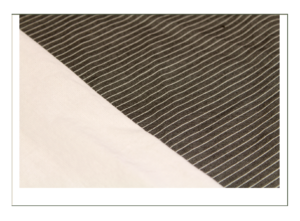
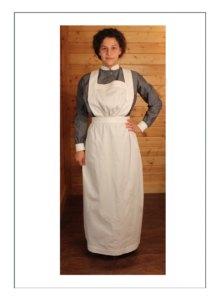
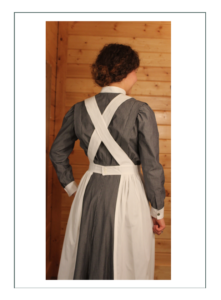

The research for this project we just went through above, and many of the items from that same Ellie project, will be handed on to Jennifer for her project. Jennifer will buy Ellie’s:
- Cap
- Chatelaine with tools and hook
- Watch Locket
and we will make for her custom and to her personal taste:
- Dress
- Slip
- Apron
- Belt
There are a few differences in the design, mostly because of what Ellie reported as the pluses and minuses in wearing her ensemble; what we learned from having built this before:
What we will KEEP from the prior design:
-
- Lovely shape of the dress’s skirt with the white pleat in the back, and if possible, the bias trim which uses striped fabric so beautifully
- Mother of Pearl Buttons – front button closure on dress; back closure on slip
- Set collar and cuffs – white (as opposed to removeable)
- Perfect fit with waist fitted to the corset, and the “pouch” of the Edwardians
- Silhouette of the slip
- Apron will be exactly the same but properly sized. This was entirely our own design from photos, so we can do it again!
What we will CHANGE from prior design:
- No pleats on slip. As the bottom layer, this was washed a lot, and ironing the pleats was a pain. We’ll use a wide gather with a pretty edge instead; perhaps do some embroidery somewhere
- Adjustable neckline using insert lace or a simple casing. The neckline was set on Ellie’s; needs more flexibility for Jennifers
- Shoulder pleats may modify. The Edwardian shape is made with a huge 3″ pleat on the shoulders which is great for tiny women with little waists, but awkward on women who might have wider waists than shoulders. We will drape this so it is flattering and helps give the proper silhouette

Appropriate In Stock for Dress (among others)
These are by far not the only ones we looked at, but the best options:
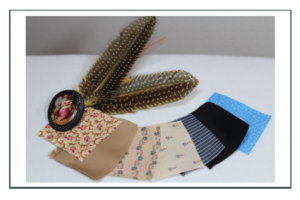
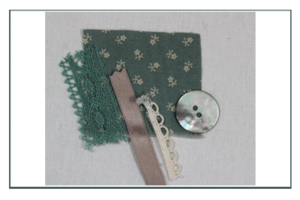
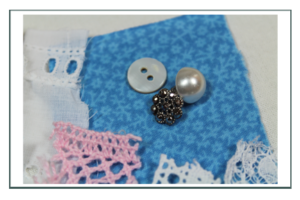
Newly found for dress
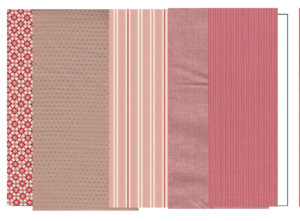
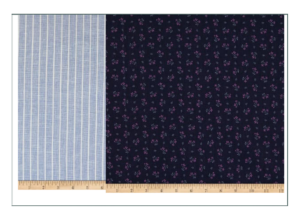
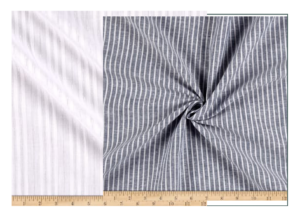
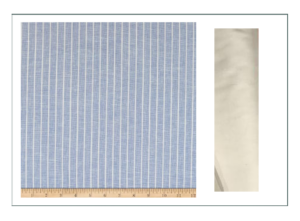
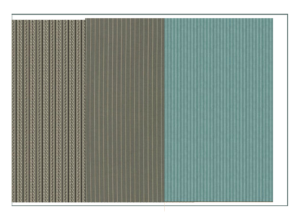
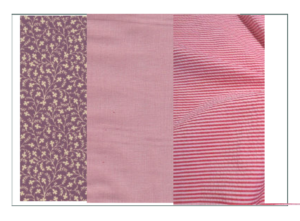
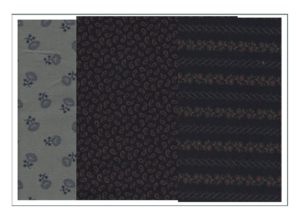
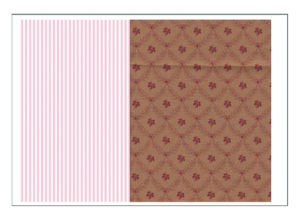
Found for slip
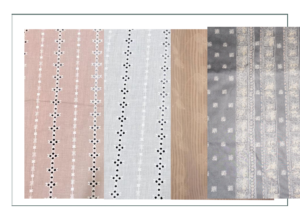
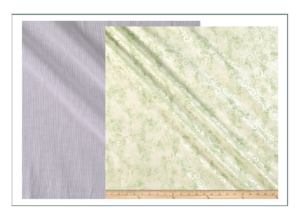
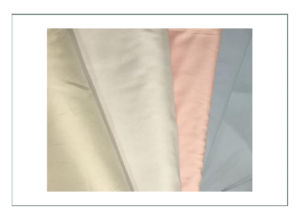
Laces and Edgings
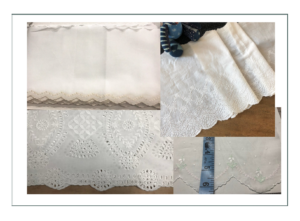
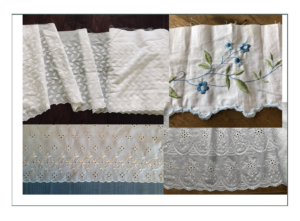
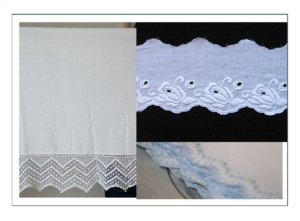
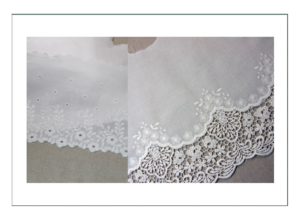
Which Color Scheme??
Pink, Dark Blue or Blue/Gray, Dark Green are right for the dress.
White, pink, or pastel blue are right for the slip.
Corset should be natural, white, or black.
Apron must be bright white.
Designer Picks
For Dress
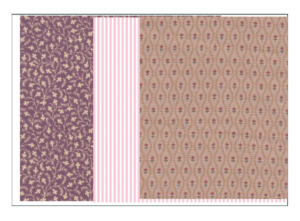
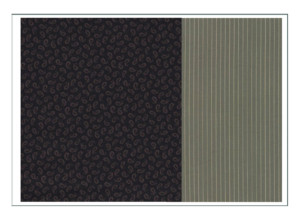
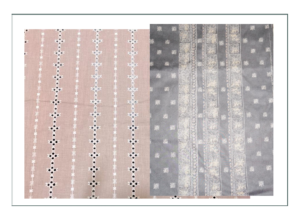
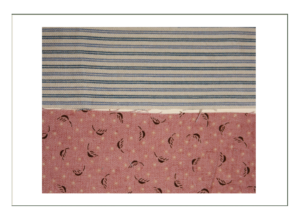



DRESS
One of the final selections was somewhat based on personal choice, but also factors of price and availability came into play. While those embroidered lace edgings are GORGEOUS, they also cost more than the whole ensemble. A nurse couldn’t have afforded anything fancy unless she did it herself.
This was to have been a lovely light blue stripe, absolutely accurate, washable, drapes well, and will hold a crisp line for the back pleating.
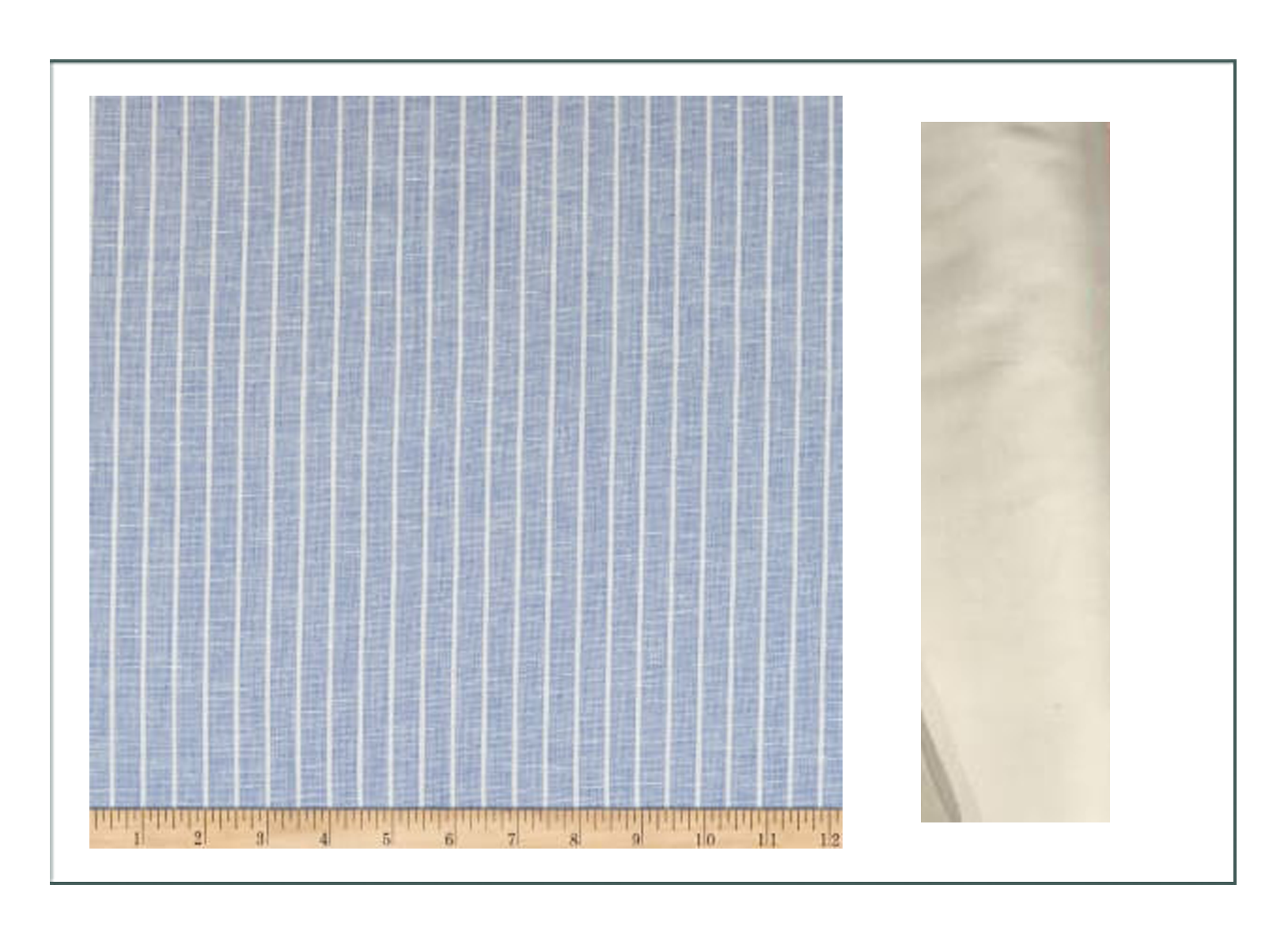
OOPS!
When the fabric came, it was dark blue gauze linen, and nothing like the photo. So we kept looking, and found these lovely 100% cottons. What we want is “Railroad Indigo” – but not denim.
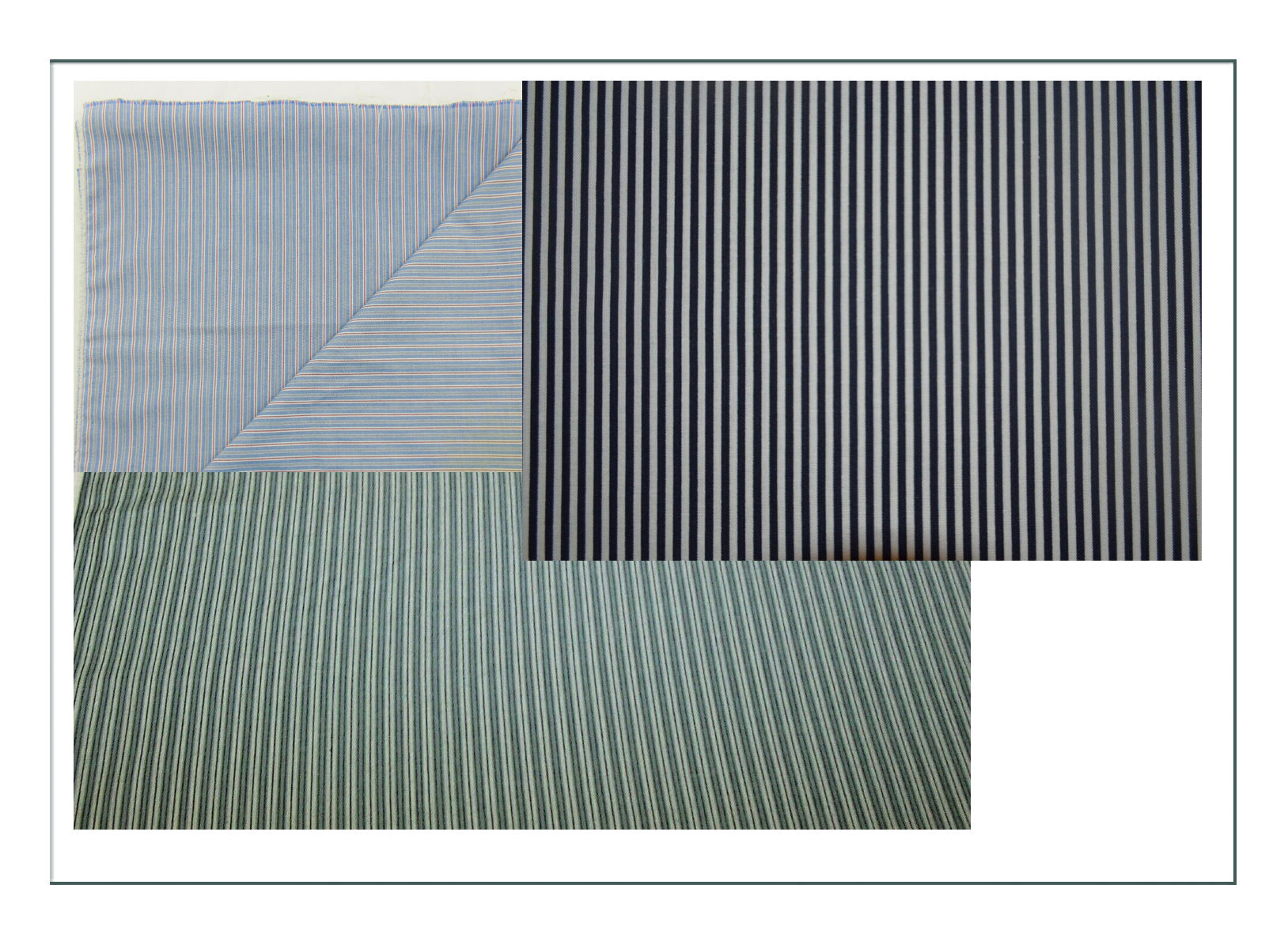
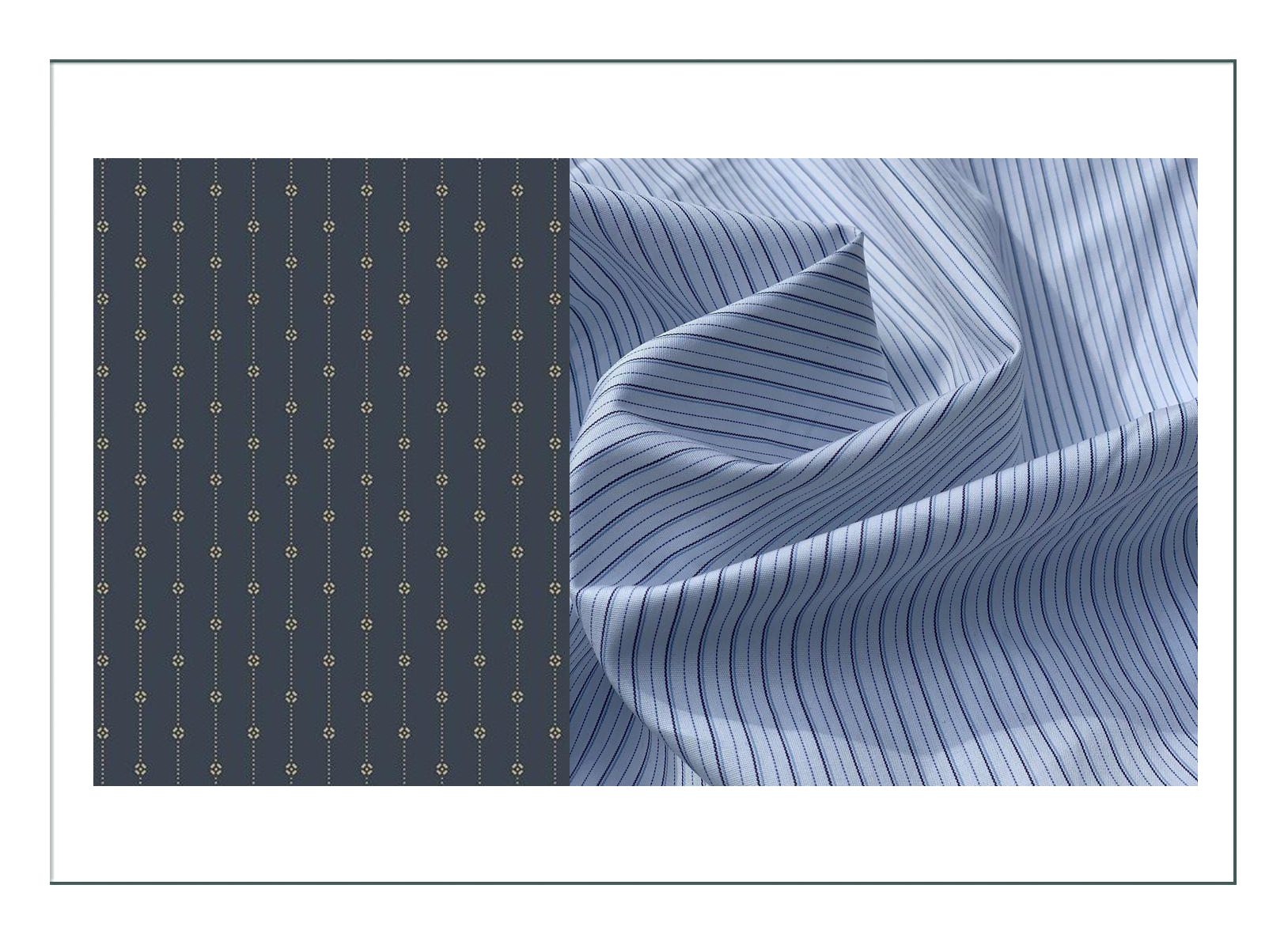
AND SO
Jennifer wants a fabric that doesn’t need ironing and can be worn often and regularly. Only a synthetic will be wrinkle free, but as best we can tell, this mercerized cotton shirting should fit the bill. It coordinates with the slip fabric and a simple edging:
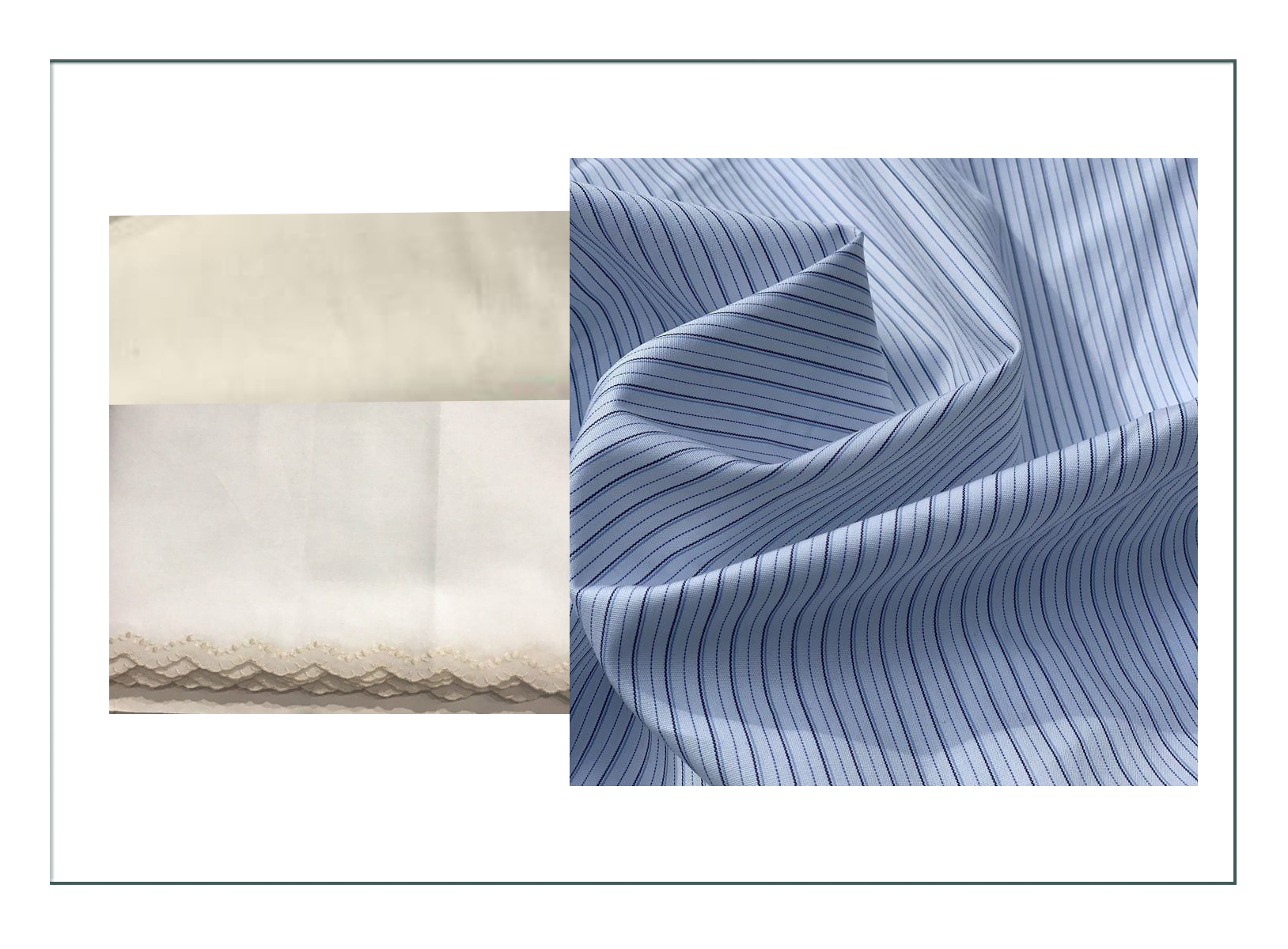
Here are two more under consideration:
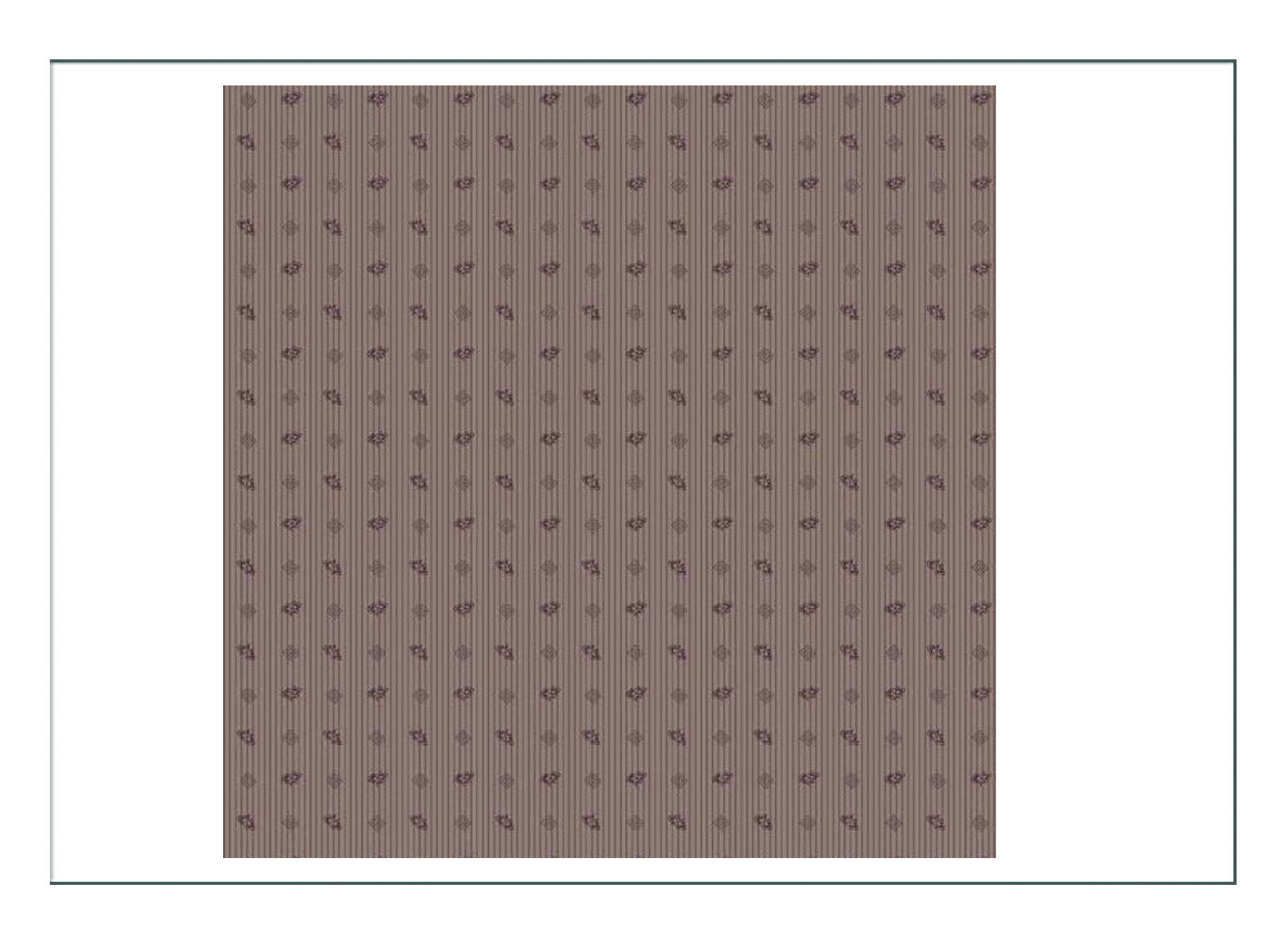
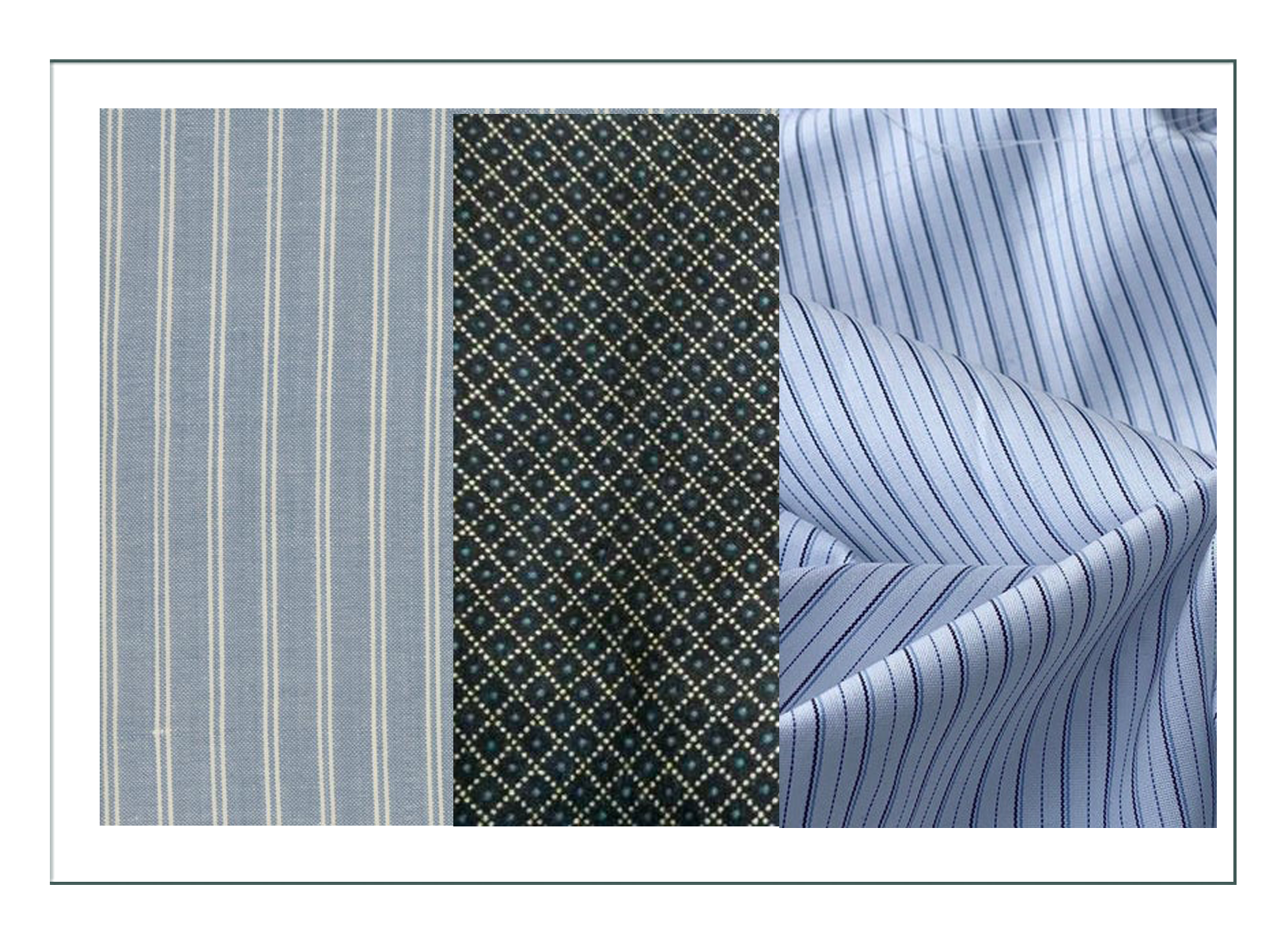
SLIP
We have a source of antique type 100% cotton bastistes which are absolutely the finest lightweight undergarment fabrics available. They sew beautifully, are very light and comfortable and washable, but best of all – for all their lightness, they are not sheer. This allows us to make a thin, lower layer with a lovely edge.
We have chosen a simple vintage embroidered (also batiste) edging we found from an antique dealer in a bulk lot, that kept the cost way down to reasonable, and the weight and scale of which will work with the delicate fabric of the slip. This will overall give a clean, tailored look that is very functional and comfortable. (in this photo the stripes are more accurate in the dress fabric)
APRON
Hard to show bright white premium cotton. Let’s just say it will be like bright white 100% cotton sheeting, the same as the Ellie project
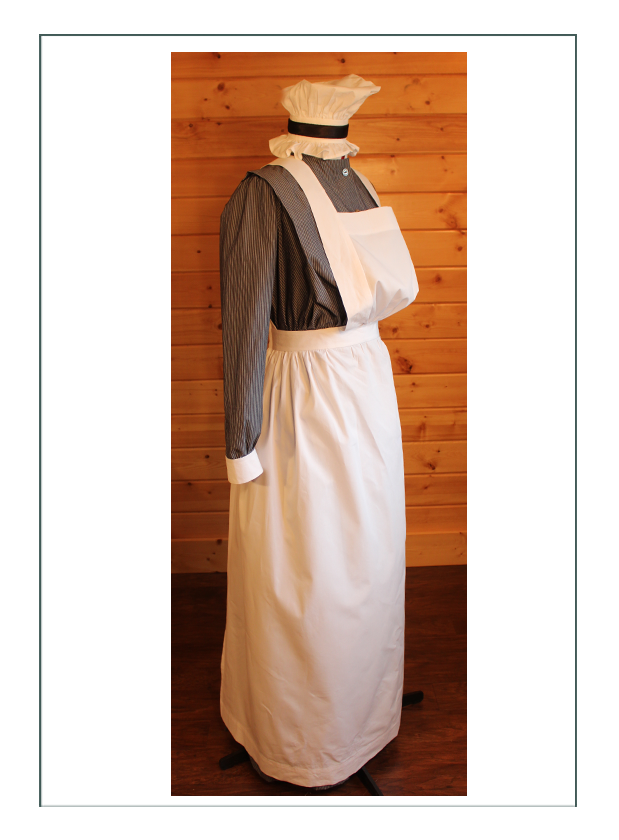
The overall look will be very similar, but lighter in contrast; lighter in color than this. The fabric is thinner and lighter too (more like shirting). This was a heavy polished cotton fabric that is no longer available, but we want a special and personal look for Jennifer anyway.

For this project, we have sketches to communicate the differences between the original Ellie ensemble and what we have learned and applied for this, Jennifer project.
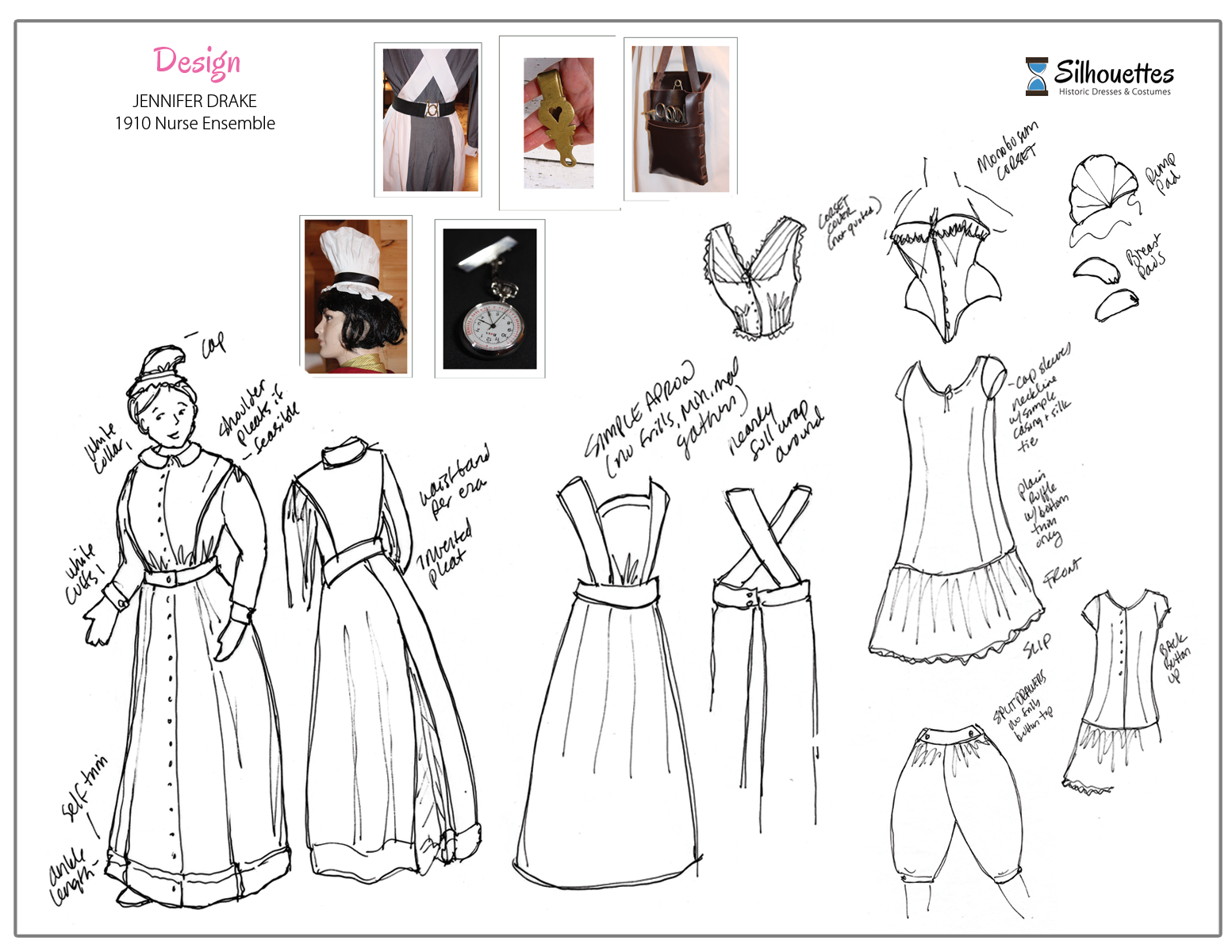
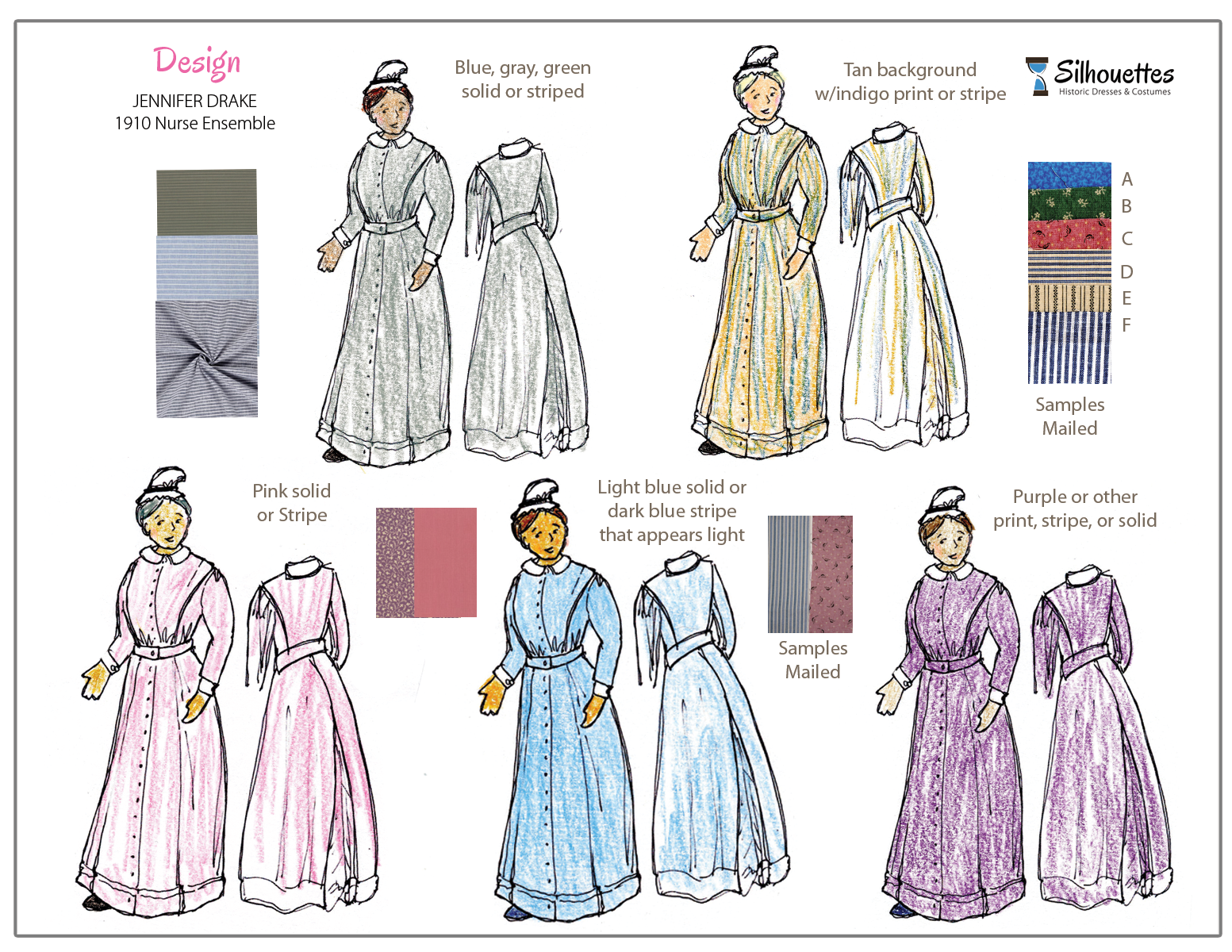
BUT WAIT!!
Similar to what we are proposing, these are the available corsets appropriate to 1910 in Jennifer’s size. We will switch from the late Victorian drawers, to the height of Edwardian fashion “French Drawers” which feature a wide and ruffled leg that ends at high calf and buttons in center front like the examples here from a different project:
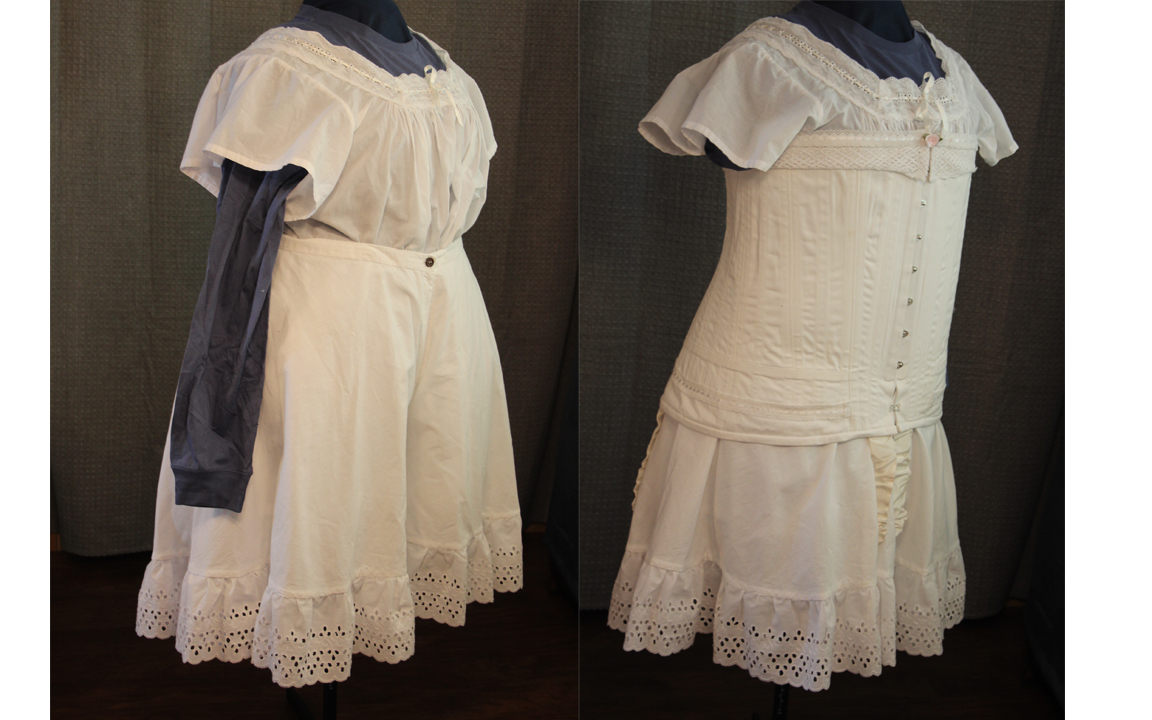
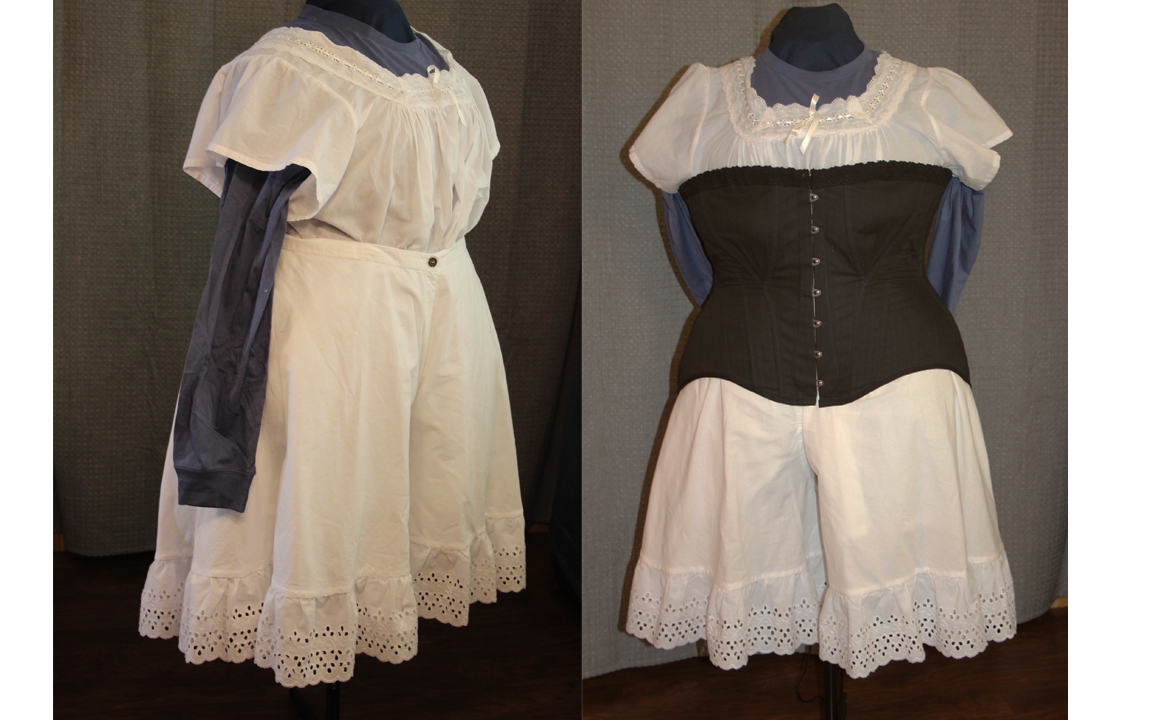
Jennifer was concerned with a black corset under white undergarments that they would show through. While we don’t have the dress fabric yet, this illustrates how the black will not show through the 2 layers of inner and outer garments:
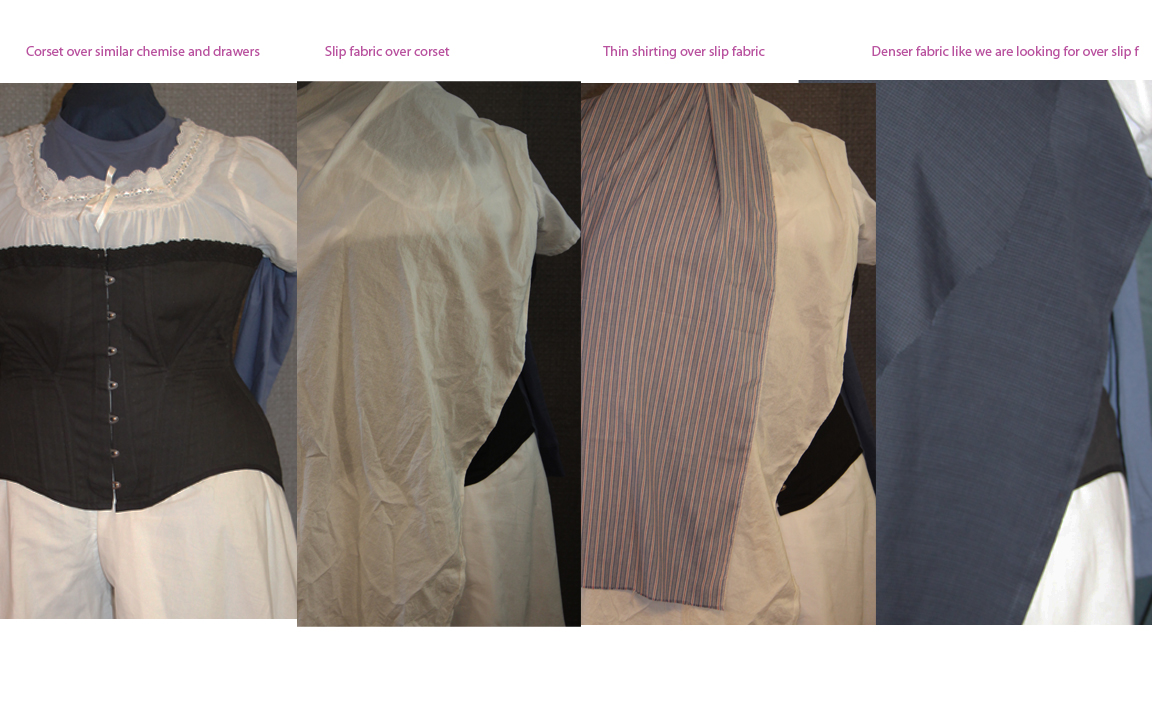
We are wanting to use a corset from stock for this, to keep the cost down. The S Monobosum that suits it right and FITS, demands a different mix of the undergarments. This is the new proposal:
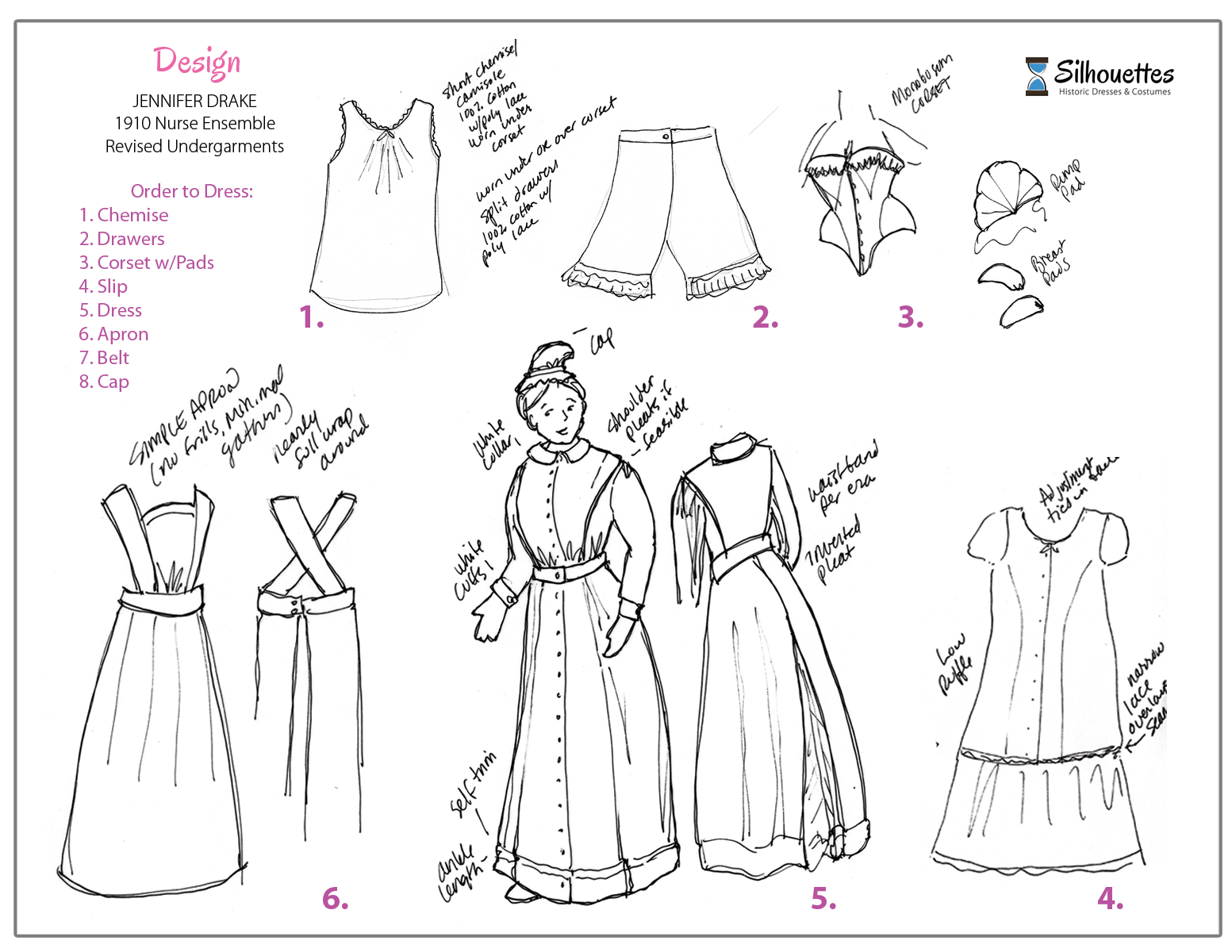
The layers become now more “modern”:
- Short Chemise (long Camisole)
- Wide split French drawers (not fitted)
- Monobosum corset
- Slip (simpler and front closing)
- Dress
- Apron
- Belt
- Cap, etc.
Fabrics have changed a bit too. Since all are ivory cotton, batiste or organic white, we’ll not show a sampler since it will look like a snowstorm. Instead, go to the main page to see the finished projects based on the above sketch.
We found the original Fabric!
It seems we are down to one of these 3:
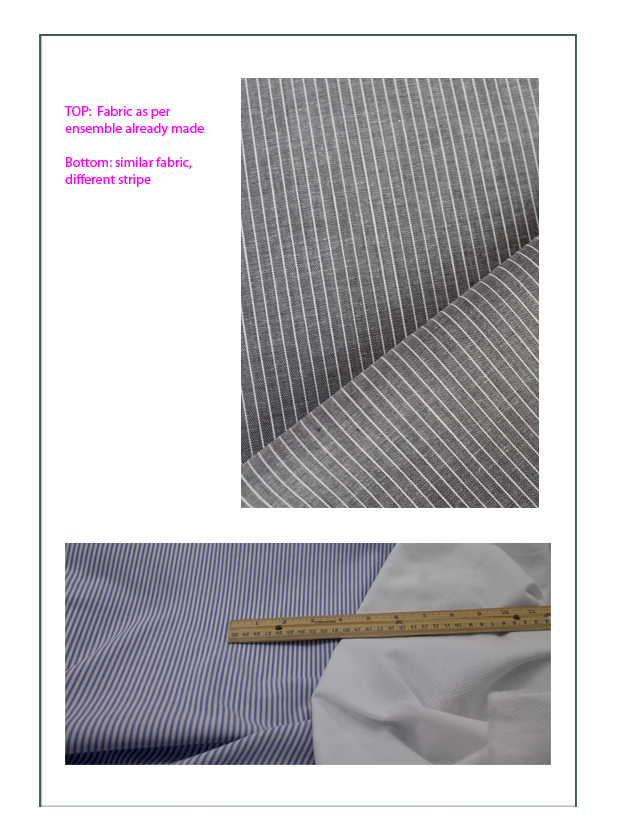
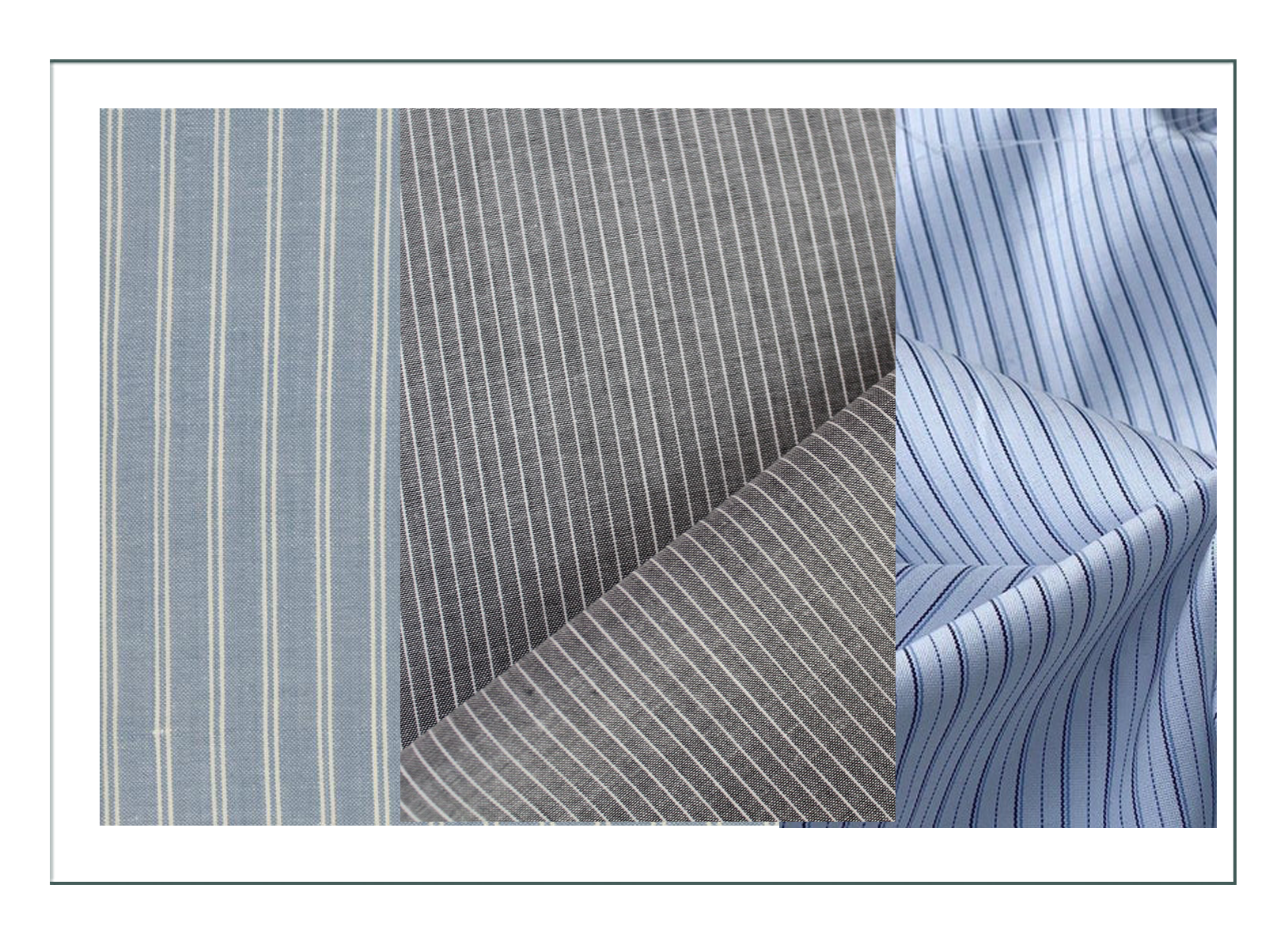
And the winner is…! (After all that searching..)
The same fabric as the original! It is a Pima Cotton Dimity; a vintage type of fabric, and so much fun to work with as it holds a crisp line and barely ever needs ironing once construted:
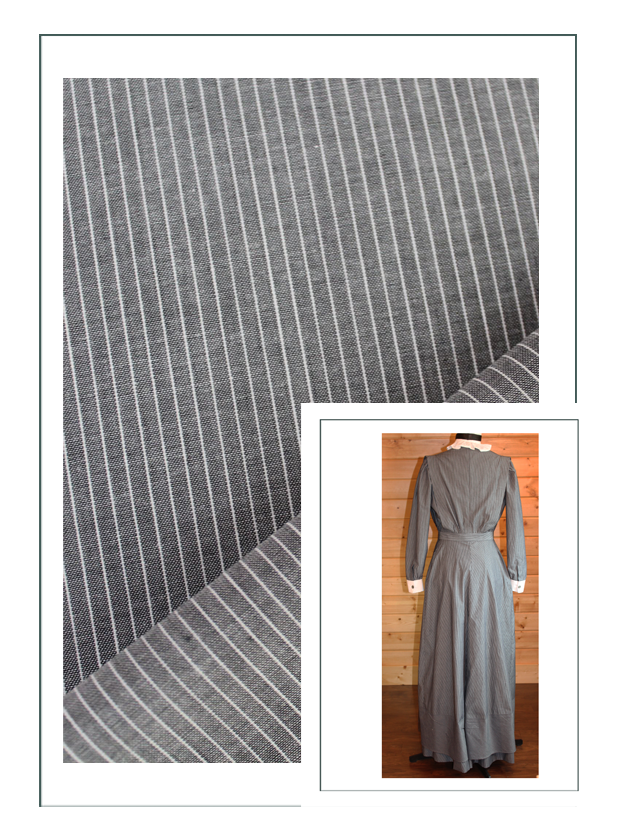
But then, a problem… The supplier only had 2 yards. So, the final design and final 2 fabrics “in hand” to select from:
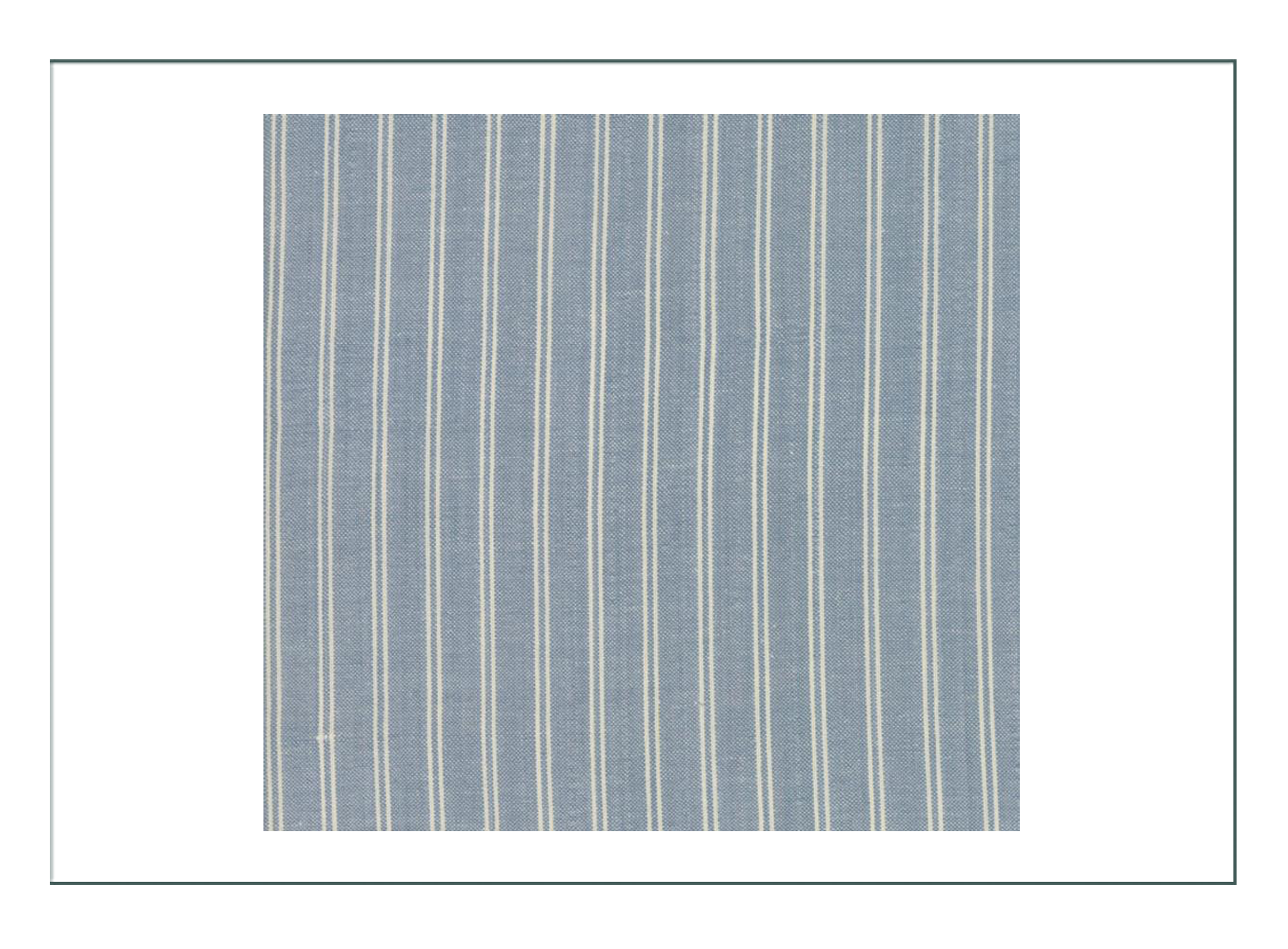
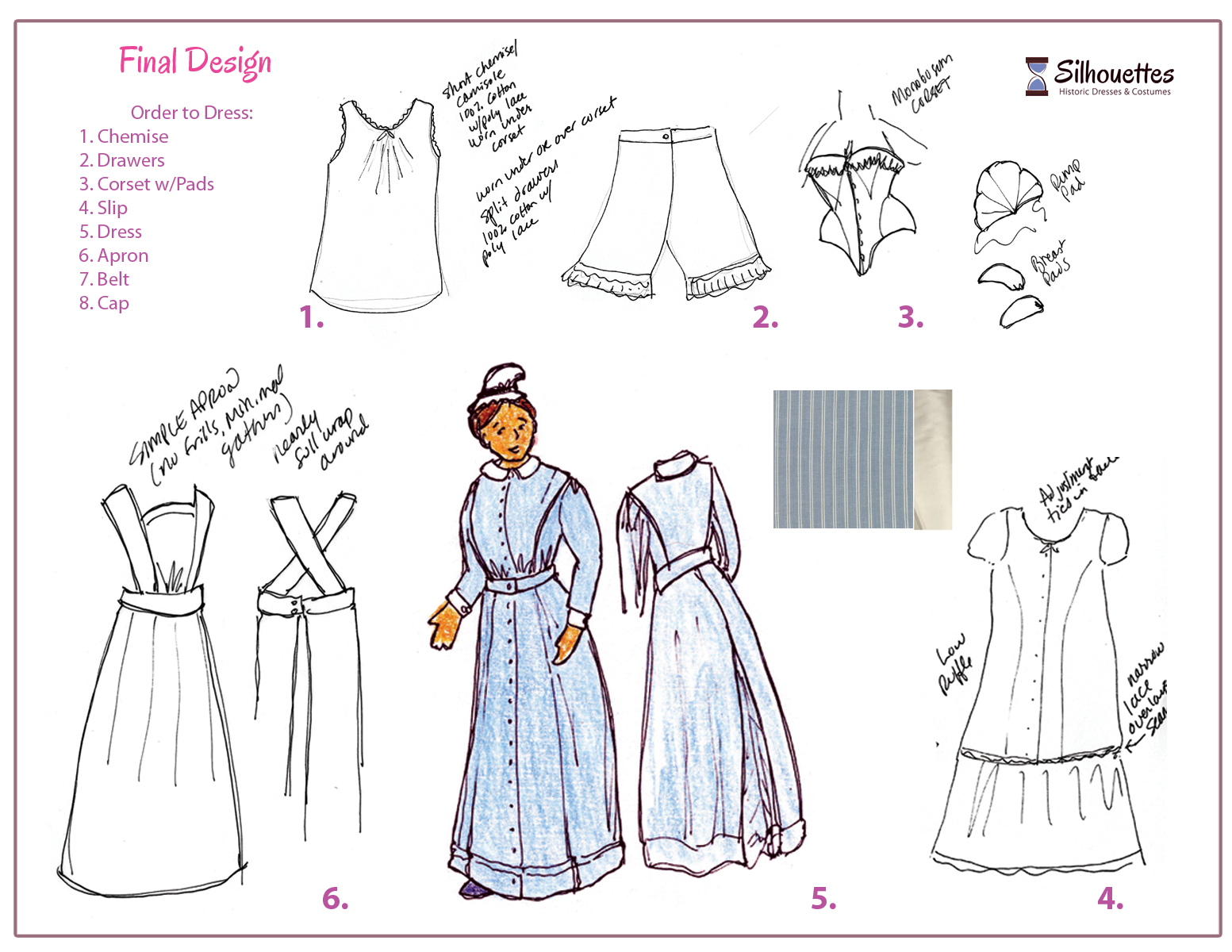
Yet another change. Jennifer did not like that fabric. The final recommendation is this lovely “finecord” also called “Babcord” imported dimity cotton from Japan. It has 1/16″ alternating navy blue and white stripes, with a tiny ridge which makes it “corded”. It is light weight and airy and will be very comfortable. It’s a bit lighter in drape and not as thick as the original fabric, but it will have the same look and not weigh as much.
This will be gorgeous with mother of pearl tiny 4 holed buttons, and creative use of the stripes with this pattern which features stripes going in different directions to highlight the design features. It should “read” from a distance much the same as the original design, but a bit more vibrant (the original was “indigo”, but actually was more of a dark cool gray color).
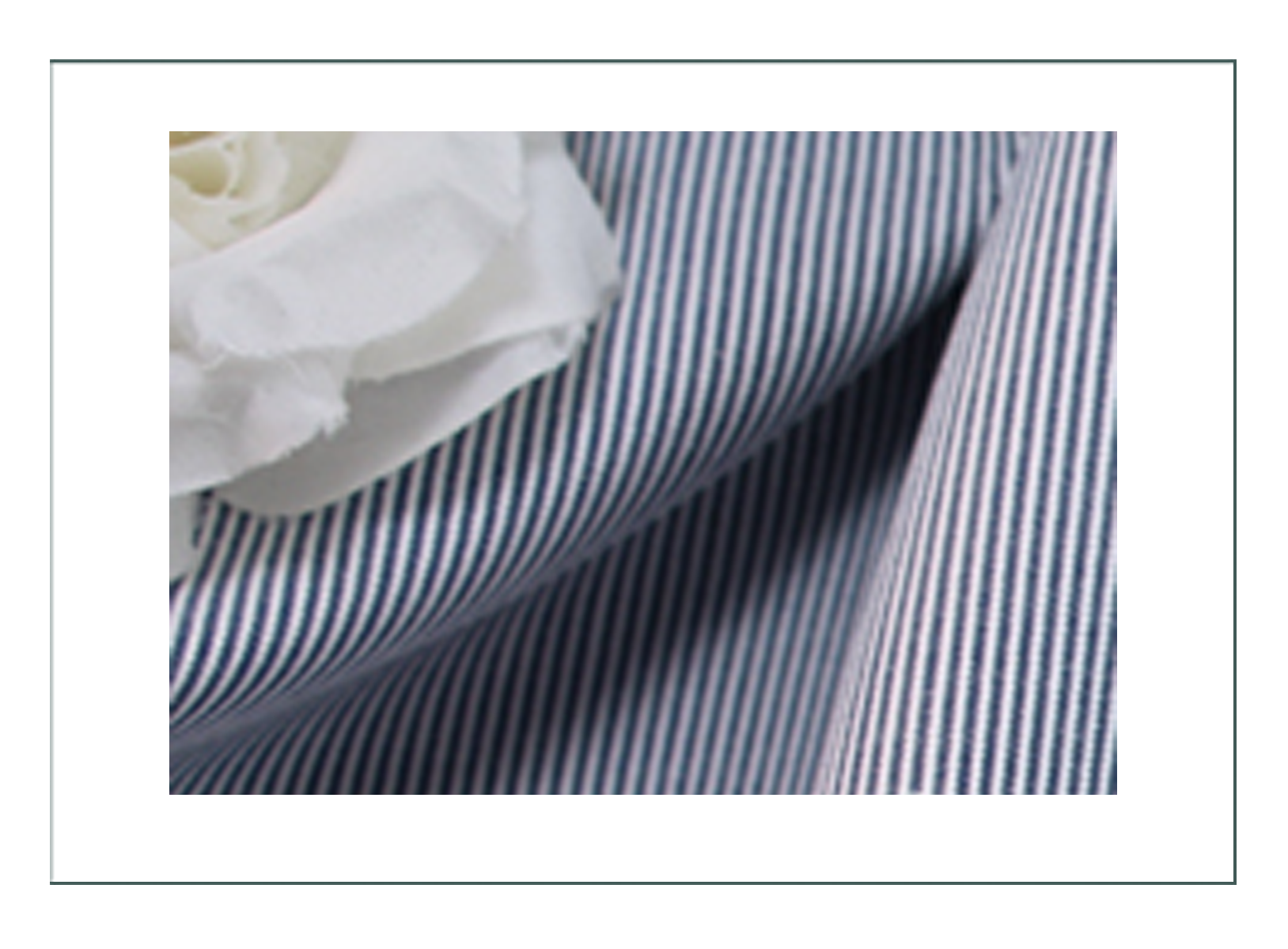
And so with 11 yards of 5 fabrics in hand, here are two that should meet all the criteria. You can see how the dimity has a stiffer drape, more suitable for a nurse because it will be low maintenance:
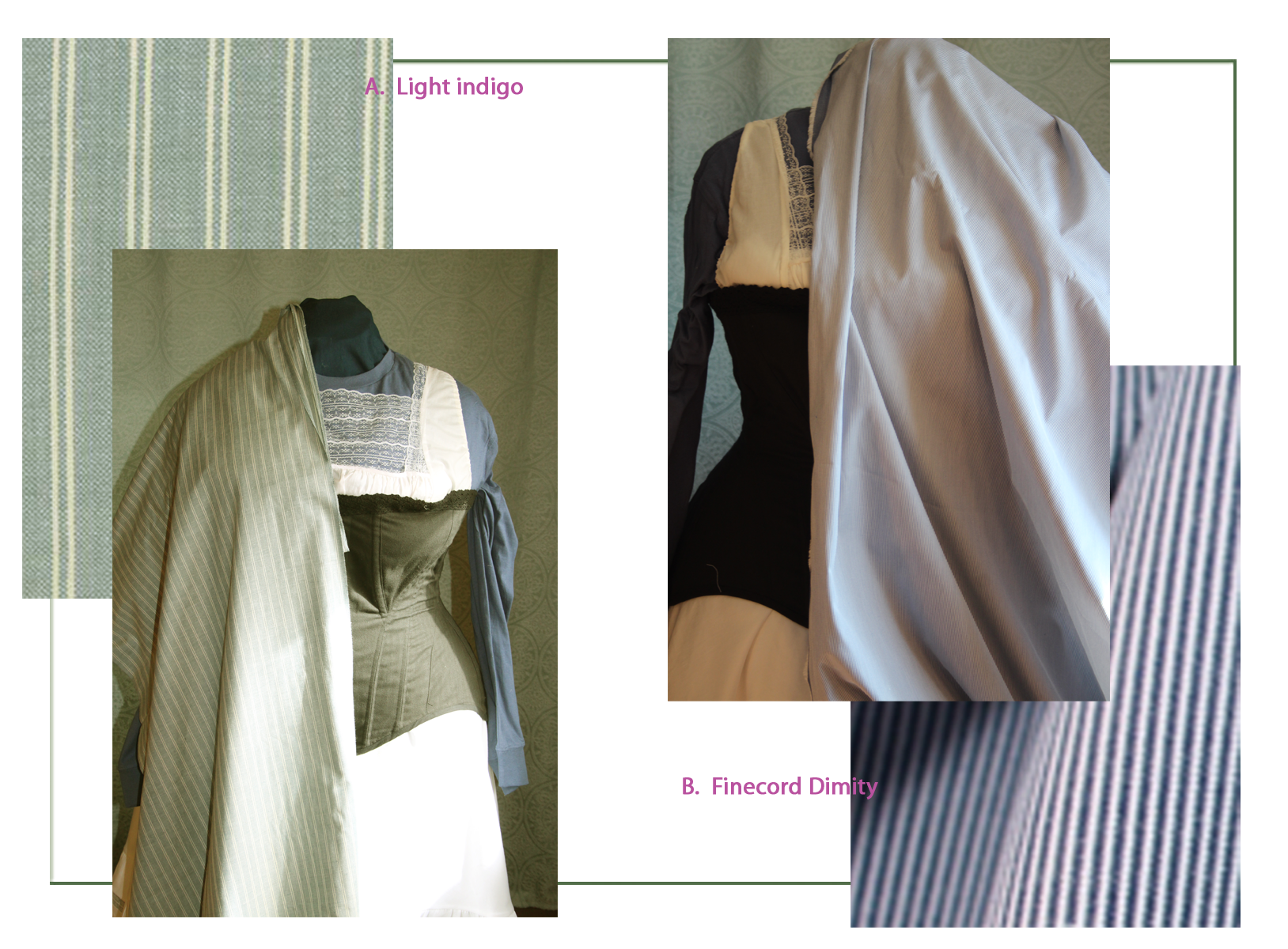
Click here to go to Jennifer’s Main Page with the Finished Project (next)
Click here to go to Jennifer’s Historical Context Page
